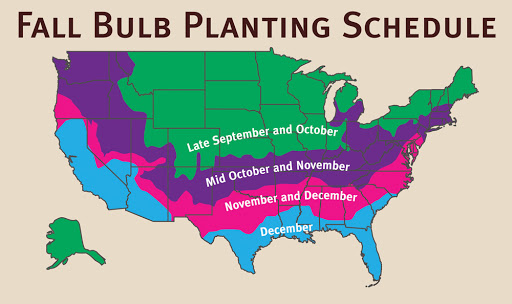A.D.R. is, by far, my favorite bulb company. Top quality products at a fair price and the best customer service out there.
Chris, I speak nothing but the truth. A.D.R. IS my favorite bulb company and I've never ever had even the smallest problem that A.D.R. hasn't taken care of to my complete satisfaction.
Bonnie Pega
, The Great Big Greenhouse
« Previous Plant | Next Plant »
Tulipa Single Late 'Grand Perfection'
Tulip
Introduced in 1999, Grand Perfection is a Single Late tulip, bred to resemble the Rembrandt tulips of the 17th century. Its petals open soft yellow with crimson-red flames, then mature to ivory-white with flamboyant ruby-red streaks.
This variety reaches 14 to 18 inches tall and thrives in full sun with well-drained soil. It blooms in mid to late spring, standing on sturdy stems that make it excellent for borders, containers, and cut flower arrangements. 'Grand Perfection' received the Award of Garden Merit from the Royal Horticultural Society.
Tulipa Calculator
When should I plant Tulipa Single Late 'Grand Perfection'?

Growing and Maintenance Tips for Tulipa Single Late 'Grand Perfection'
Planting: Plant in fall when soil temperatures drop below 55°F. Set bulbs 6–8 inches deep with the pointed end up. Choose a sunny, sheltered site to protect their tall stems and graceful blooms from wind.
Spacing: Space bulbs 4–6 inches apart. For a dramatic effect, plant in groups of 10 or more—ideal for borders, cutting gardens, or formal displays.
Light: Full sun encourages strong stems and rich color. While light shade is tolerated, consistent sun enhances bloom longevity and form.
Soil: Use well-drained, neutral to slightly acidic soil (pH 6–7). Avoid poorly drained areas—French tulips are sensitive to bulb rot in wet spring conditions.
Watering: Water after planting to settle the soil. In spring, water only during prolonged dry spells to maintain bloom integrity without over-saturating the roots.
Temperature & Dormancy: Requires 12–16 weeks of cold (below 50°F) for root development and bud initiation.
Fertilization: Apply a balanced bulb fertilizer when planting and again in early spring as shoots emerge to support stem strength and bloom quality.
Pests: Squirrels may disturb bulbs—use mesh or mulch to deter them. Deer will eat buds and foliage, especially early in spring, so use fencing or repellents in high-pressure areas.
Disease: To prevent Botrytis (Tulip Fire), plant only healthy, firm bulbs in sunny, well-ventilated areas. Avoid overhead watering and remove any infected material—never compost. Rotate planting zones annually and avoid replanting in affected sites for at least three years.








Check back soon for additional details.